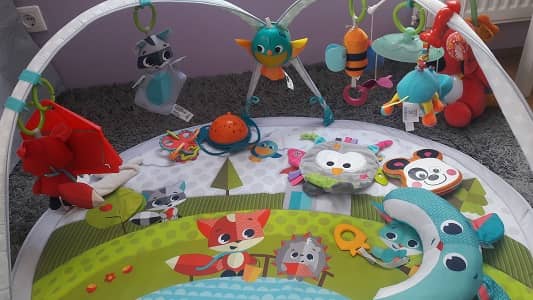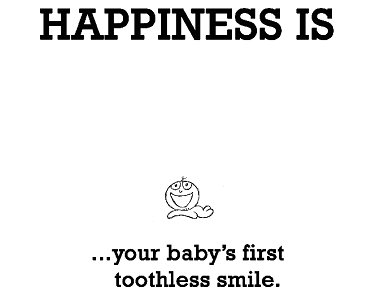Woohoo! Survived the first month and everyone is alive and well. Things will surely be easier now. Umm… Will they? Let’s talk about challenges and joys that second month with a newborn child brings, and how to deal with them.
Before we begin, if you are new in this field of business – parenting, we would suggest that you check out our first article about handling the baby in its first month.
Oral thrush, rashes and skin changes and Visiting Pediatrician
As probably every new parent, I too had spent countless hours watching my little baby sleep. I’ll confess I checked if she is breathing more times than I’m willing to admit. And in those close observations, I saw something new and disturbing on her little face every day. Pimples!
I knew it’s common for a newborn to have baby acne (thank you pregnancy hormones!), but the sheer number of them made me think it must be something else. I cut out dairy and other common allergens but to no avail. Pimples spread over the neck and chest and it was time to consult with a pediatrician. And… It was baby acne.
But we discovered something else – oral thrush in the mouth. It is caused by an overgrowth of fungus Candida albicans and manifests as white lesions on the tongue and inner cheeks. We did notice that but thought it’s normal milk residue. Other symptoms may include baby fussy when feeding or refusing to eat. If breastfeeding, a mother can also get infected – check if your nipples are overly sensitive, red or you feel pain in them. Anyhow, the doctor prescribed oral gel for both me (for nipples) and the baby and after a week the thrush was gone.
But two weeks later the skin troubles struck again. This time it was Intertrigo. I never knew there were so many different rash types with fancy names, but I fear I’ll become expert soon. So Intertrigo is a rash that occurs between the folds because of the heat, friction, and sweat. We noticed red, raw skin with the funny smell on the baby neck. It was buried deep inside the folds (yes, there is more than one!) and looked terrible. There is no special treatment for it, just wash between the folds regularly and try to keep that area dry. We also used a diaper rash cream with mixed success.
When a baby is two months old it’s time to receive the first dose of vaccination against common infectious diseases: diphtheria, tetanus, pertussis (whooping cough), polio, Haemophilus influenza type b (Hib), and hepatitis B. It’s combined in one vaccine so baby only receives one shot. Still, prepare she will not be happy about it! As with every medicine, there are some side effects of vaccine (although consequences of those diseases are much scarier!). You can expect your child will be more irritable for a few days. There is a possibility of fever, drowsiness and refusing to eat. It’s a good idea to put a cold compress on injection spot to prevent redness and swelling. Thankfully, Lea didn’t get a fever, but few hours after vaccination she started to scream like in great pain, so we gave her paracetamol based medicine as recommended by the doctor.
Jumps in development – things that worked may not work anymore
When we talked about colic in the last article we mentioned we found a way to handle them. Carrying her in special position while walking in a bouncy way worked like a charm. We felt confident, probably overconfident. Because one day this super effective method stopped working. The first time that happened, we started to question did we even experienced colic before because the intensity of screaming was off the roof! Nothing seemed to work and we started to feel like parenting newbies again.
And then suddenly, random position shift made her stop for a moment. I added a little “Shhh” and swung her gently and in five minutes there was heavenly silence. We realized our little baby is changing and that means we must keep up. New tactics emerged and we are happy to report we are handling it again. For now!
Crying peaks in weeks 6 to 8 which was also true in our case. It’s no wonder – there is so much development taking place in those weeks. One morning you wake up and your child seems like a whole different person. Watching its surroundings with genuine interest, following toys, smiling, babbling. Those sudden changes are called jumps in development and you will really notice them.
Periods in which they happen can be challenging. Imagine all that processing that’s happening in your baby’s brain! Little fussiness is expected. There were times when Lea spent whole day feeding, like in some frenzy. I had to be next to her all the time or she would start crying. I started to suspect I’m having trouble with my milk supply and got really worried. But thankfully, I researched it and found something that explained a lot – wonder weeks.
This concept was popularized by pediatrician Frans Plooij in his book The Wonder Weeks. There are ten of those “wonder weeks” – around 5, 8, 12, 19, 26, 37, 46, 55, 64 and 75 weeks. They are characterized by three C’s: clinginess, crankiness, and crying. But beneath that unpleasant behavior, the dots are connecting. Your child is making huge mental leaps and forming new neural pathways.
Seeing those changes makes everything worth it. And just knowing it’s all part of the normal development is a huge relief for the anxious parent. Let’s talk more about that good stuff.
Awareness development and First intended smile
Remember how all your child cared about was eating, sleeping and pooping? Well, it’s still that way… Mostly. Little by little you will notice how your child becomes more and more aware of its surroundings. It will hold attention on specific objects, follow it with her eyes, turn its head in the direction of sound…
Also, you will frequently find your baby’s hand in its mouth, especially if you’re not using a pacifier. Hand coordination is still nothing to write home about, but if it’s close to the mouth, it will end up in the mouth!
That is great because finally, you can have some play time with your precious one. Just don’t expect too much and keep in mind that everything your child sees or hears is probably for the first time, and it needs time to study it process that information. So playing with your child (which mostly boils down to doing a same repetitive thing) can soon become boring to you but don’t think it’s boring for your little one. Just moving an object left and right for the half an hour can feel tedious to you, but your precious little dumpling will have a blast! And remember that your child needs it. Not only is it bonding with you even more, but it’s cognitive capabilities are developing through that repetitive play.
And a highlight of the second month… Drums, please… First, nonrandom smile! Believe me when I tell you that you will just melt from happiness when you see for the first time that your child is smiling to you, and not just randomly or because it just pooped. That is the stuff you have been waiting for and that makes you feel rewarded for all the hard work. Communication with your baby will also become easier because you will know for sure that your small one is happy or sad or annoyed.
And with a smile, come the first words. Well, not words but babbling. You can start having a conversation with your baby, not the meaningful one but conversation nonetheless. You can expect your baby to start using “ha”, “le”, “ooo”, “uuu”, “aaa” and you can make the great play out of it. We play pirates because when both of us start to babble, it really reminds of the pirate talk!
And let me tell you, there is no better feeling after a hard day at work when you come home and your precious little one is smiling on you happy to see you… Just precious!
So yes, in comparison to the first month, we can say with assurance that second month is a lot easier and brings more joy to you as a parent. Sure, it has its challenges but every day as your child gets older brings new stuff to tackle with but also immense happiness watching your little one thrive! And who knows what the third month brings… Visit us in about a month and we will let you know.
If you’re searching for some great STEM Activities for Kids and Child development tips, you’re on the right place! Check the Categories below to find the right activity for you.








3 thoughts on “What to expect from newborn in the Second month”